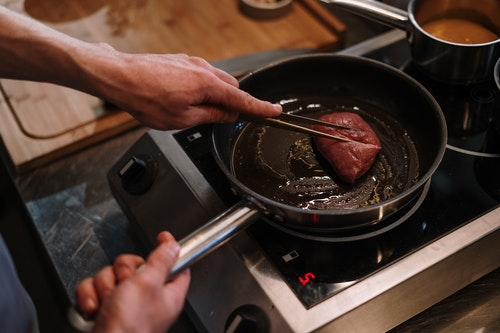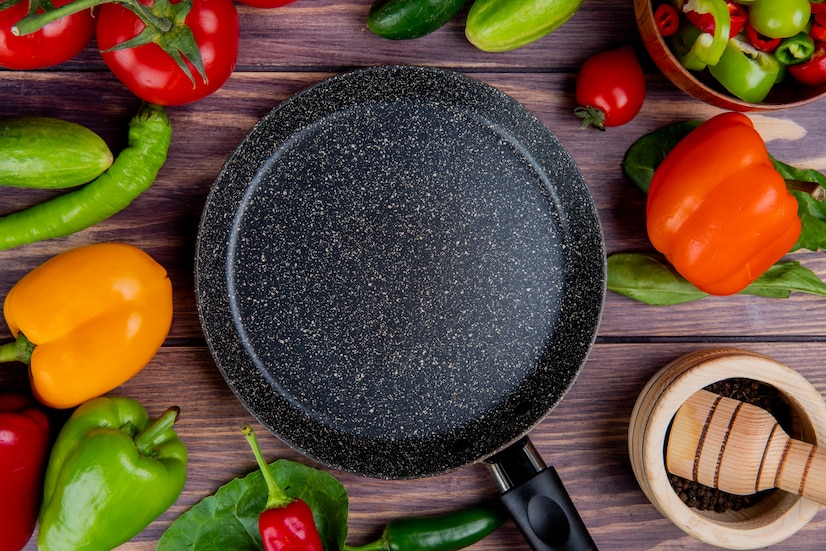Cast iron skillets are known for their longevity and versatility. But even with their renowned durability, there comes a time when you might find yourself asking, ‘When to throw away a cast iron skillet?’ While they can last for generations when properly cared for, there are certain signs and scenarios where it’s best to retire your trusted cookware.

The Timeless Appeal of Cast Iron
Cast iron skillets have been a staple in kitchens for centuries due to their ability to evenly distribute heat and enhance flavors. They have a unique capability of improving with age, making them an irreplaceable asset in your kitchen. Properly maintained cast iron cookware can be passed down from generation to generation. But, just like anything else, they aren’t invincible.
Recognizing the End of the Road
Knowing when to throw away a cast iron skillet requires keen observation. Here are some key signs that indicate it might be time to part ways with your beloved skillet:

1. Deep Cracks and Irreparable Damage
One of the most obvious signs that a cast iron skillet has seen better days is the presence of deep cracks. While smaller cracks can sometimes be overlooked or repaired, deep cracks significantly compromise the skillet’s integrity and safety.

2. Severe Rust Formation
A little rust on your cast iron skillet isn’t the end of the world. However, extensive rust that covers large areas and appears pitted may be a different story. If the rust is too deep and aggressive, it might be best to consider a replacement.

3. Warping and Uneven Base
A warped cast iron skillet is difficult to cook with as it doesn’t sit flat on the stove. An uneven base compromises the heat distribution, resulting in uneven cooking. Once the warping reaches a point where it’s noticeable, it may be time to bid farewell.
4. Presence of Holes
Holes in your cast iron skillet are a serious red flag. Whether caused by corrosion or improper repair attempts, holes indicate that the skillet’s material has been compromised. Unfortunately, this is a strong sign that your skillet should be retired.
Other Considerations
5. Difficulty in Seasoning
If your cast iron skillet has trouble holding its seasoning despite repeated efforts, it could be a sign that the skillet’s surface has deteriorated too much. This would be a good indication that a new skillet is needed.
6. Awful Smell or Taste
Sometimes, no matter how much you clean your cast iron skillet, lingering smells or tastes just won’t go away. This could mean that the skillet has absorbed odors and flavors that it shouldn’t have, making it unpleasant to cook with.
Maintenance and Care Tips
Before deciding to throw away your cast iron skillet, here are some tips to help extend its lifespan:
Regular Cleaning
Ensure your skillet is cleaned properly after every use. Check out this guide on cleaning a cast iron skillet.
Proper Seasoning
Season your skillet regularly to maintain its non-stick surface. Follow these seasoning recipes for best results.
Storing Techniques
Store your skillet in a dry place to prevent rust. Using proper accessories can also help maintain its condition.
FAQ
When Should I Throw Away My Cast Iron Skillet?
You should throw away your skillet if it has deep cracks, excessive rust, warping, holes, cannot hold seasoning properly, or has lingering smells/tastes.
Can I Repair My Cast Iron Skillet?
Smaller cracks and minor rust can often be repaired. However, deep cracks, warping, and holes often cannot be repaired effectively.
How Do I Prevent My Skillet From Deteriorating?
Regular cleaning, proper seasoning, and correct storage can help prolong the lifespan of your cast iron skillet.
Relevant Internal Links:
As an Amazon Associate, I earn from qualifying purchases.

